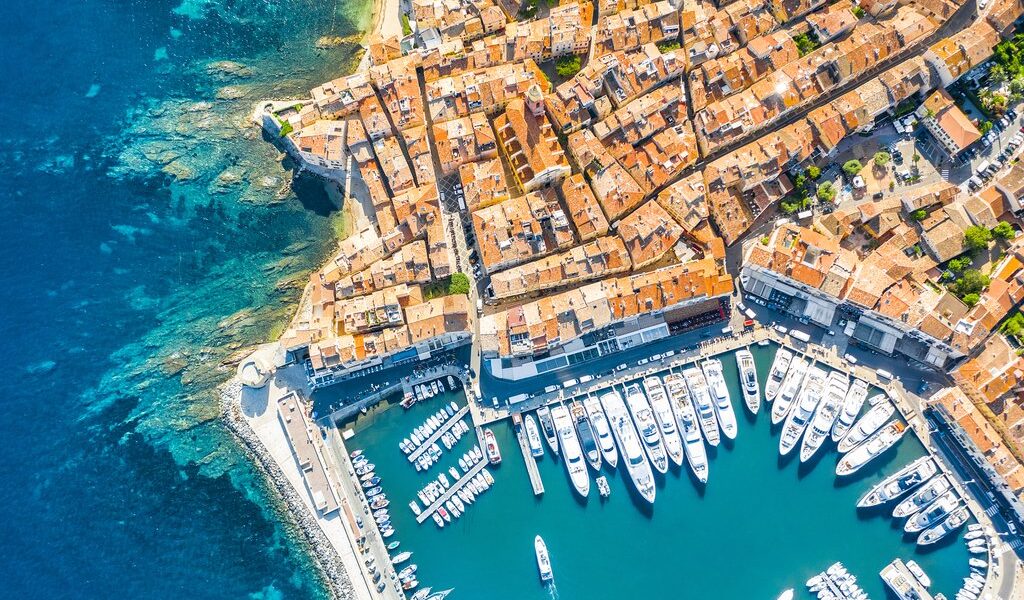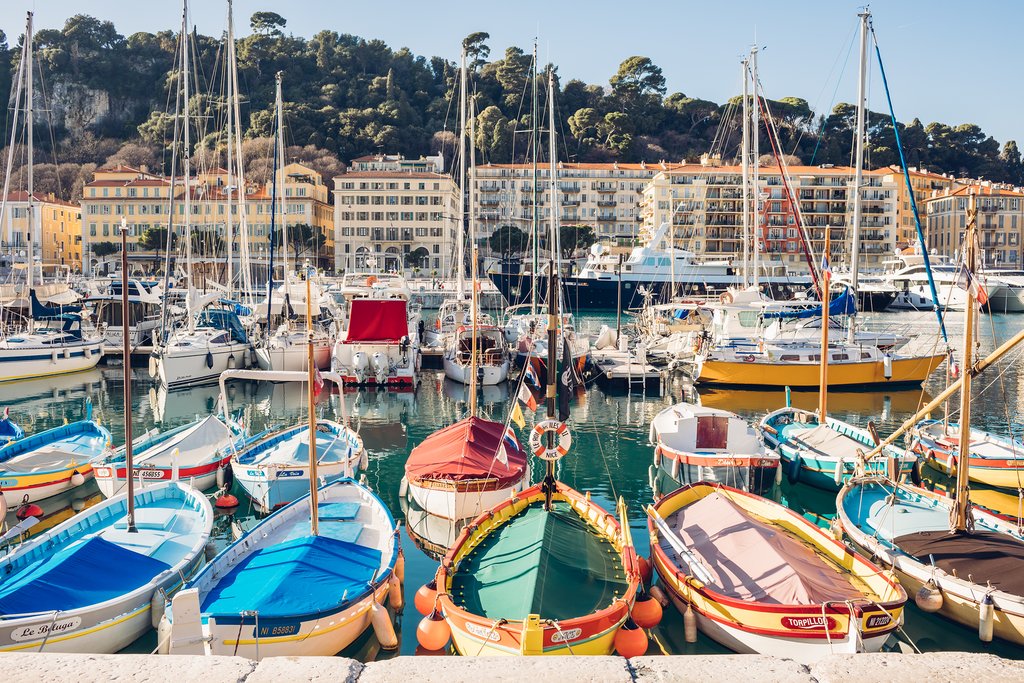
The French Riviera is a true pleasure to visit at any time of year. Spring and summer are preferable if you’re looking for the classic resort experience: even though you’ll encounter festival crowds and vacationers left and right, you’ll enjoy beautiful beach weather. Fall is quieter and rainier, though early fall is still great for swimming in the Mediterranean. And winter is mild in the region, with few crowds, save for the tourist influx around Christmas and Carnaval. Read on for more information about the best time of year to visit the French Riviera.
The Enchanting Seasons of the French Riviera
The Côte d’Azur, more commonly recognized by its English name, the French Riviera, constitutes a significant and captivating portion of France. This famed stretch of coastline graces the southeastern part of the country, hugging the Mediterranean Sea with its breathtaking beauty. Its western boundary commences in the vibrant region surrounding Saint-Tropez, a town synonymous with glamour and sun-drenched beaches, and gracefully extends eastward until it reaches the border of Italy, a land of equally rich history and culture. The allure of the French Riviera lies not only in its geographical location but also in the unique experiences it offers throughout the year.
The climate of this renowned area is classified as humid Mediterranean, blessing it with four distinct seasons, each presenting its own unique charm and attractions. Summer, stretching from June through August, is characterized by its intense heat and brilliant sunshine, drawing visitors from across the globe. Autumn, a warmer and frequently wetter period, unfolds from September through November, painting the landscape in hues of gold and crimson. Winter, a mild and often overlooked season, spans from December through February, offering a tranquil escape from the harsher climates of northern Europe. Finally, spring bursts forth from March through May, adorning the region with vibrant colors and a palpable sense of renewal. Although rainy days remain infrequent – the French Riviera is, after all, globally celebrated for its abundant sunshine – it is worth noting that occasional downpours along the coastline are relatively common during the autumn months.
From a tourism perspective, summer unequivocally reigns supreme as the high season on the French Riviera. However, spring also experiences a significant surge in tourism, particularly when major events like the internationally acclaimed Cannes Film Festival and the thrilling Monaco Grand Prix take center stage. The fall season presents a more tranquil and often overlooked opportunity to visit, offering the advantage of fewer crowds and generally favorable weather conditions, making it an ideal time for leisurely exploration. Winter, in stark contrast, is by far the quietest period to visit, offering a serene escape for those seeking solace and tranquility.
Exploring the French Riviera in Summer (June – August)
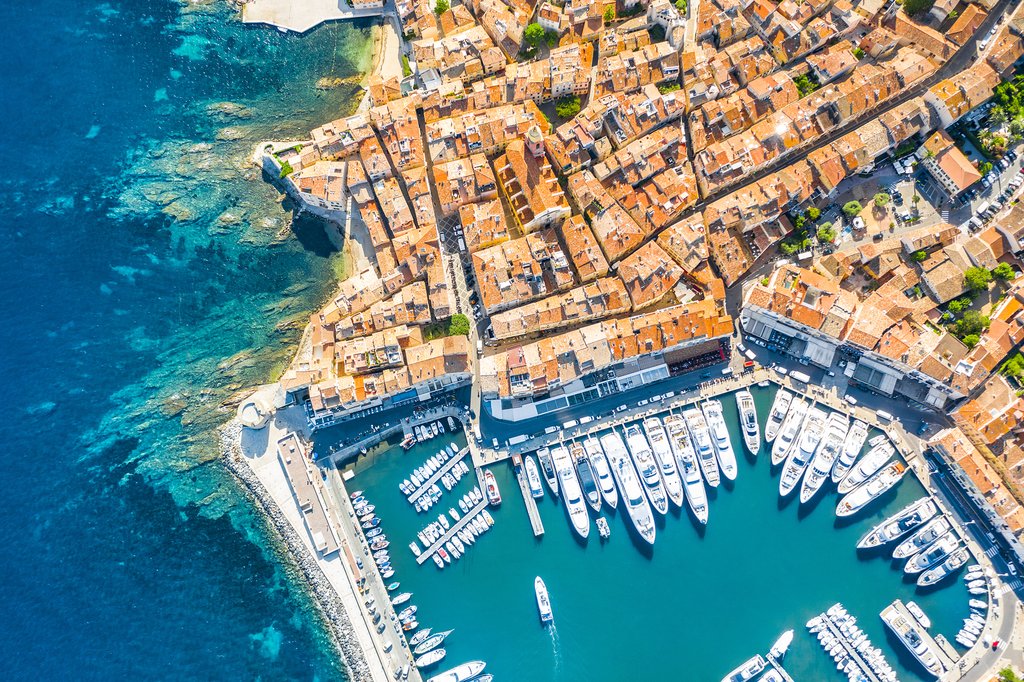
It is perfectly logical that the French Riviera experiences its peak tourist season during the summer months. The region’s stunning beaches, charming coastal villages, and luxurious resort towns become magnets for both locals and visitors hailing from across France and the four corners of the globe. This influx of tourists inevitably leads to price fluctuations to match the increased demand. August, in particular, witnesses a surge in activity, as French residents typically schedule their annual vacations during this month. Additionally, weekends become bustling hubs of activity as both French and Italian individuals plan quick getaways to the picturesque coast, seeking respite from their daily routines.
Regarding the weather during the summer, expect hot conditions that are typically moderated by refreshing sea breezes that sweep along the coastline. In Nice, for instance, expect daytime highs to reach the mid-80s Fahrenheit, with temperatures gradually cooling off as darkness descends. July boasts the distinction of being the sunniest month of the year on the French Riviera, and the chance of rainfall is remarkably low, making it an ideal time for outdoor activities and soaking up the Mediterranean sunshine. However, it’s worth noting a particular weather phenomenon known as the “sirocco,” a hot, dry, and dusty wind that originates in North Africa and blows across the Mediterranean Sea. This wind can cause unexpected spikes in temperature, but it’s also known for its relatively short duration, quickly passing through the region.
Summer presents a fantastic opportunity to embark on a leisurely road trip through the French Riviera, allowing you to discover both the coastal gems and the charming countryside villages that dot the landscape. One such option includes a five-day itinerary that begins and concludes in Nice, offering a comprehensive exploration of the region. Along the way, you can indulge in the pristine Mediterranean beaches, marvel at the intricate medieval architecture, browse through vibrant local markets, explore captivating perfumeries, and venture along picturesque hiking trails that wind through the hills and valleys.
Summer Events
July – Nice Jazz Festival. This globally recognized music event, which proudly holds the distinction of being the first jazz festival in the world, attracts an eclectic mix of musicians and passionate jazz enthusiasts from all corners of the globe. The festival provides a stage for both established jazz icons and emerging talents, creating an immersive and unforgettable musical experience.
August – Festival of Pyrotechnic Art. This spectacular fireworks display illuminates the skies above Cannes, captivating audiences with a symphony of light, color, and sound. The festival is a celebration of the artistry and technical prowess of pyrotechnic design, with competing teams vying to create the most awe-inspiring and visually stunning show.
Experiencing the French Riviera in Fall (September – November)
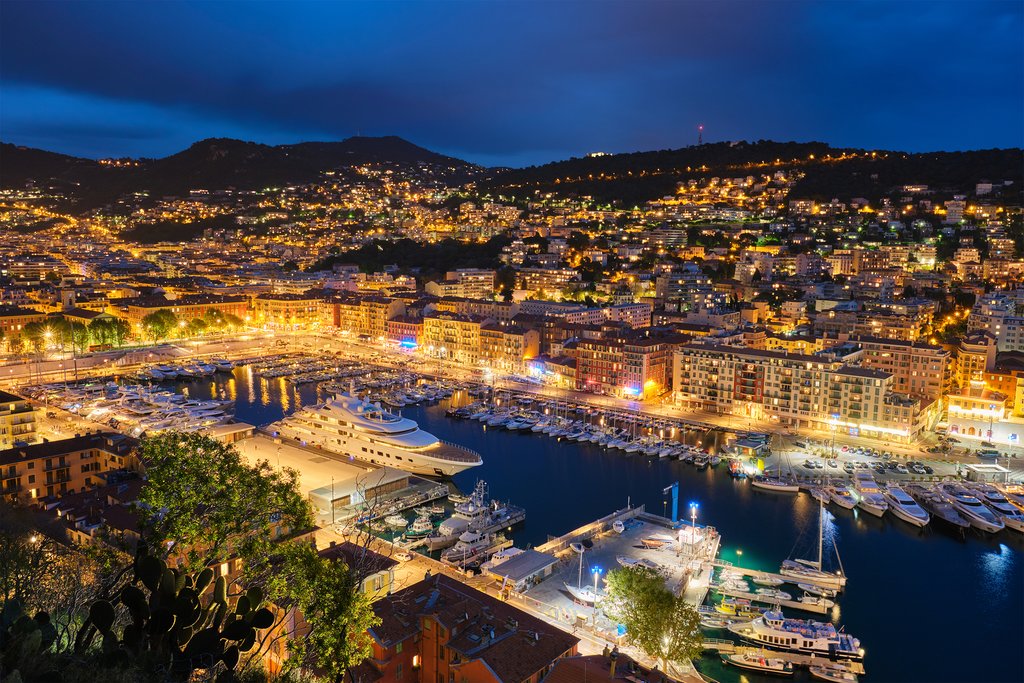
From a purely weather-centric viewpoint, fall might not be the most optimal time to plan a visit to the French Riviera. While temperatures tend to be comfortable, typically hovering in the 60s Fahrenheit and even extending into the lower 70s on those warmer days, it’s also important to acknowledge that storms and rainy days are more prevalent during this season. October stands out as the wettest month of the fall, followed closely by November and September. However, despite the increased chance of precipitation, the French Riviera in the fall still holds a unique appeal. If you’re fortunate enough to encounter a couple of sunny days during your visit, it can even be warm enough to take a dip in the Mediterranean Sea. The water temperature, having been warmed by the sun throughout the entire summer season, remains pleasantly in the warm 70s.
The throngs of summer tourists usually begin to dissipate around the first or second week of September, which often translates to lower rates on hotel accommodations and a reduced need for making advance restaurant reservations. However, it’s worth noting that special events, such as the prestigious Régates Royales sailing regatta, which takes place annually in September, can bring an influx of visitors to the region, temporarily disrupting the otherwise tranquil atmosphere.
Fall Events
September – Régates Royales. Keep an eye out for these graceful and elegant sailing vessels as they navigate the waters of the Bay of Cannes during this legendary sailing regatta. This event showcases the timeless beauty of classic yachts and the skill of their crews, providing a captivating spectacle for spectators.
Discovering the French Riviera in Winter (December – February)
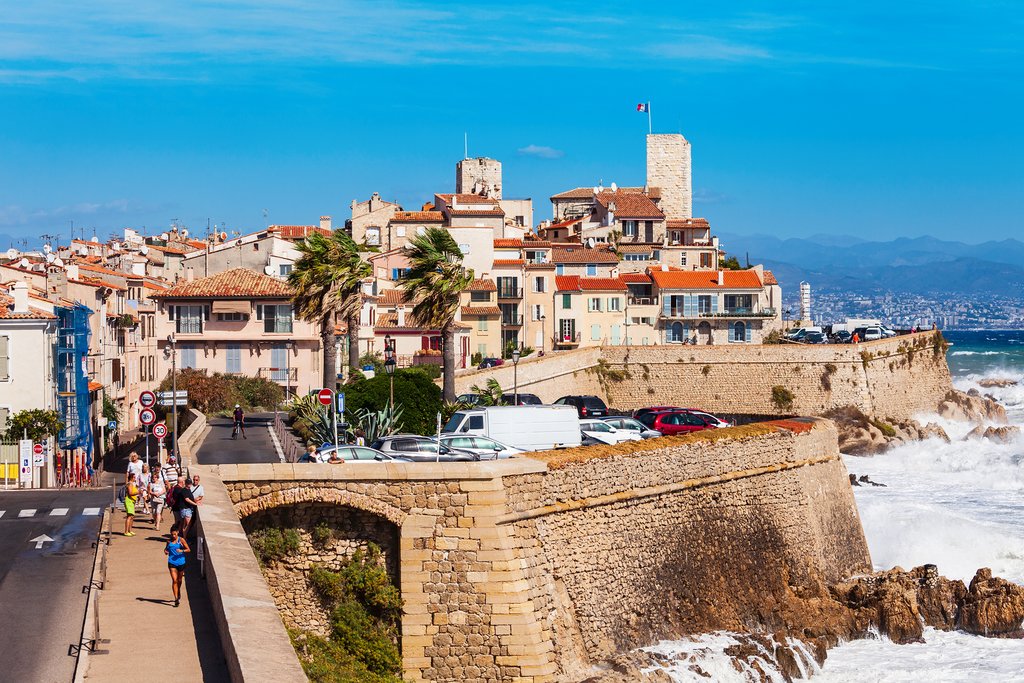
Winter can be a truly enchanting time to travel to the French Riviera, offering a unique perspective on this popular destination. During this season, you’ll have the opportunity to take advantage of enticing deals and promotions on hotel rooms throughout the region. Furthermore, the weather remains mild enough on most days to allow for enjoyable outdoor lunches, as long as you’re dressed appropriately for the cooler temperatures.
The Christmas season draws a diverse mix of international tourists, as well as French and Italian visitors who arrive for weekend getaways to enjoy the festive atmosphere in the cities and explore the charming Christmas markets that pop up throughout the region. Be sure to plan and book accommodations in advance, particularly if your trip coincides with a Friday or Saturday night stay. The same holds true for the Carnaval de Nice in February, as Nice experiences a substantial increase in visitor numbers during this lively event. However, the Fête du Mimosa (Mimosa Festival), also held in February, generally doesn’t attract the same volume of visitors, allowing for a more relaxed and spontaneous experience. While it’s not essential to meticulously plan your trip around this festival, it’s certainly a worthwhile time to visit if you have a particular interest in flowers and floral displays.
In Nice, the average daytime temperatures typically hover in the 50s Fahrenheit, with the potential to reach into the 60s when the sun is shining brightly. It’s important to be prepared for the possibility of rain in December, which can be quite similar to the conditions experienced during the autumn months. However, January and February tend to be drier and sunnier, providing more pleasant weather for outdoor activities.
Winter Events
December – Christmas. During the holiday season, charming Christmas markets spring up in cities and villages all along the French Riviera, creating a festive atmosphere filled with holiday cheer.
February – Carnaval de Nice. This rollicking pre-Lent celebration features a vibrant tapestry of parades, masquerades, and street parties along Nice’s picturesque waterfront.
February – Fête du Mimosa (Mimosa Festival). This vibrant festival, held in Mandelieu-la-Napoule outside of Cannes, is dedicated to the cheerful yellow mimosa flower. Expect to see elaborate flower floats, festive parades, and lively musical performances.
Springtime Splendor on the French Riviera (March – June)
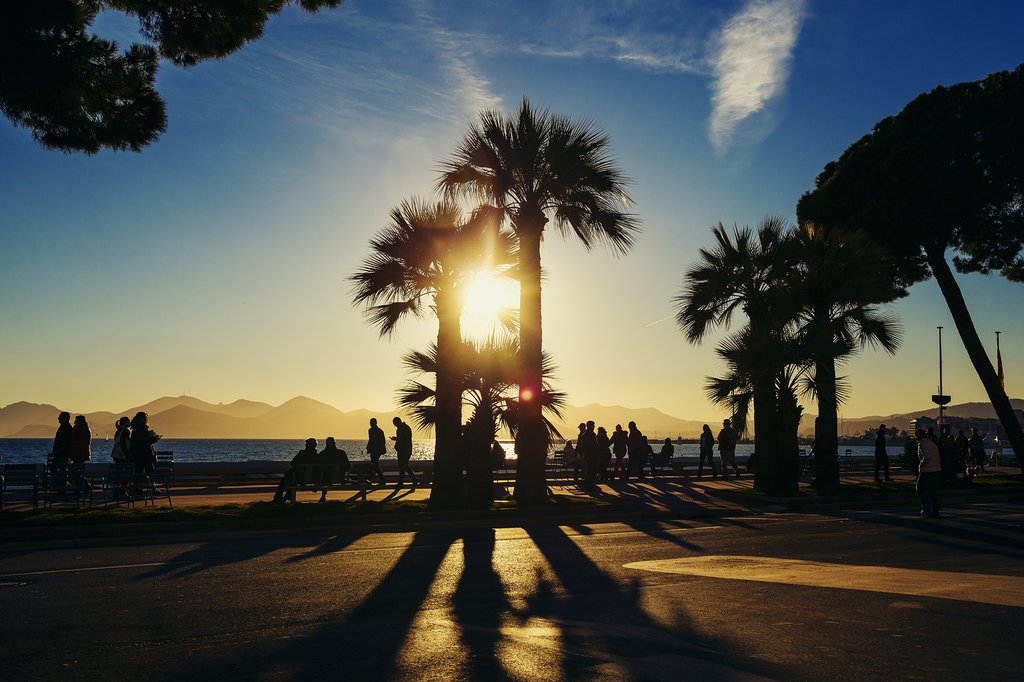
Aside from the bustling summer season, spring emerges as the most sought-after time to visit the French Riviera, captivating travelers with its irresistible charm. The combination of pleasant weather and a vibrant calendar of sporting events and cultural festivals, most notably the prestigious Cannes Film Festival and the thrilling Monaco Grand Prix, draws visitors from near and far. As a result, the beaches and resorts tend to be quite busy during this time of year, especially in May. Securing accommodations in advance is highly recommended if you have your heart set on a particular hotel, and reserving a table at restaurants is also a prudent measure. Weekends are particularly lively, as French and Italian tourists seize the opportunity to embark on quick getaways to the charming beach towns that dot the coastline.
During April and early May, temperatures typically hover in the upper 60s Fahrenheit, gradually increasing into the 70s in late May and June. Rainfall is generally infrequent during this period, and sunshine is abundant, creating ideal conditions for outdoor activities and exploration. However, it’s worth noting that the ocean remains relatively cold during this time, making it less than ideal for swimming, at least until the arrival of June.
Spring Events
May – Cannes Film Festival. As one of the world’s most prestigious film festivals, this glamorous event attracts renowned directors, talented writers, and acclaimed actors from across the globe.
May – Monaco Grand Prix. This exhilarating motor race challenges exceptionally skilled drivers as they navigate the winding and challenging roads of Monaco.
Strategies for Avoiding Crowds During the French Riviera’s Peak Season
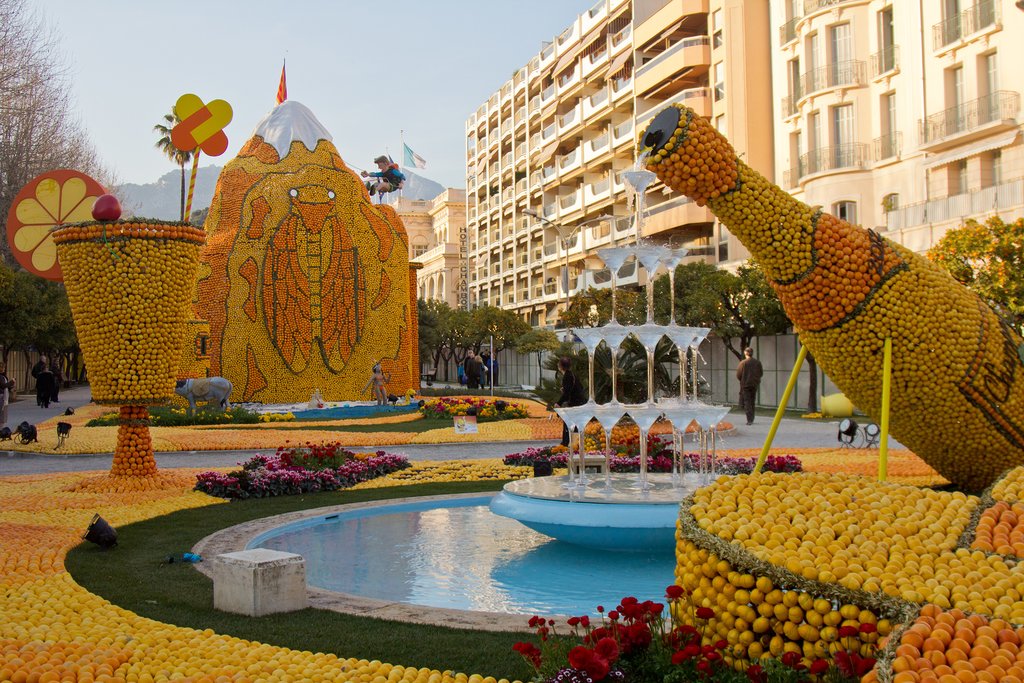
You’ll find yourself in a comparatively tranquil environment, at least relative to the peak season crowds, if you plan your visit to the French Riviera during the rainy months of fall or winter, steering clear of the tourist influx that surrounds Christmas and Carnaval. However, if you choose to visit the French Riviera between April and September, be prepared to contend with substantial crowds.
If you’re considering a spring visit, it’s wise to check the specific dates for various festivals in advance. Unless you specifically plan to attend the Cannes Film Festival or the Monaco Grand Prix, it’s generally advisable to avoid the French Riviera during those times, as you’re likely to encounter higher prices and significantly larger crowds throughout the region. During the summer months, crowds are virtually unavoidable. However, you can mitigate their impact by focusing your exploration on smaller towns and villages rather than concentrating your time in the busiest and most popular destinations, such as Saint-Tropez and Nice.
Conclusion: Determining the Ideal Time to Visit the French Riviera
Late spring or late summer might just be the quintessential times to plan your visit to the captivating French Riviera. In the latter part of spring, you can bask in the warmth of the weather, perfect for sunbathing on the pristine beaches and engaging in leisurely sightseeing, while simultaneously avoiding the larger crowds that descend upon the region during the peak summer months. As late summer transitions into early fall, before the onset of the rainy season, you’ll encounter fewer tourists compared to the summer months, and the inviting waters of the Mediterranean Sea will still be delightfully warm, making it ideal for swimming and water activities. If you happen to be visiting during these optimal periods, you can fully immerse yourself in the beauty and charm of the region with an extended trip, exploring all that the French Riviera has to offer.
However, even if you find yourself constrained to visiting the French Riviera during the winter or fall seasons, rest assured that you’ll still fall in love with its unique charm and appeal. Just be sure to pack a warm coat and an umbrella as a precaution. The French Riviera, regardless of the crowds or the prevailing weather conditions, remains a truly gorgeous destination throughout the year, offering something special to every traveler who ventures to its shores.
B-845

